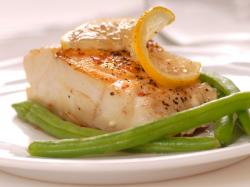Seafood Menus From Hawaii Reflect Long-Term Ocean Changes
August 6, 2013 | 1 min to read

The colorful restaurant menus that thousands of tourists bring home as souvenirs from Hawaii hold more than happy memories of island vacations; they contain valuable data that are helping a trio of researchers track long-term changes to important fisheries in the Aloha State.
The scientists are using the menus as part of a larger project to fill a 45-year gap in official records of wild fish populations in the state's ocean waters during the early 20th century.
"Market surveys and government statistics are the traditional sources for tracking fisheries. But when those records don't exist, we have to be more creative. Here we found restaurant menus were a workable proxy which chronicled the rise and fall of fisheries," said Kyle S. Van Houtan, adjunct assistant professor at Duke University's Nicholas School of the Environment and leader of the Marine Turtle Assessment Program at NOAA's Pacific Islands Fisheries Science Center.
The team's analysis of 376 menus from 154 different restaurants showed that near-shore species such as reef fish, jacks and bottom fish, for example, were common on Hawaiian menus before 1940, but by its statehood in 1959, they appeared collectively on less than 10 percent of menus sampled. Restaurants began shifting to serving large pelagic species, such as tuna and swordfish. By 1970, 95 percent of the menus contained large pelagics; inshore fish had all but disappeared.
To read the rest of the story, please go to: Duke University
